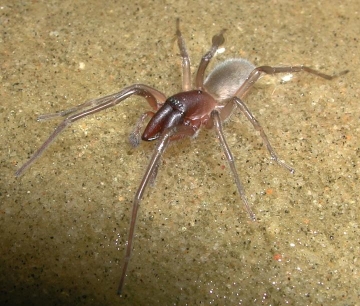690223_Lyrical Spider_360 px wdith.jpg

This marine spider was recently cataloged and named after Bob Marley in reference to the song "High Tide or Low Tide" which aptly describes the spider's habitat. Credit: Robert Raven, CC BY 4.0
A few years ago, some scientists in Australia got a tip from a city council member in a town in the state of Queensland, on the country’s northeastern coast: Some unusual spiders were appearing on the beaches of a nearby town during especially low tides.
The scientists checked it out. And their analysis revealed that the spider belonged to a species that hadn’t been cataloged before. So they recorded its details—an adult male is about a quarter of an inch long, a female about 50 percent larger, for example. And they gave it a name: Desis bobmarleyi—Bob Marley’s Intertidal Spider. The name was inspired by a song by the Reggae singer and writer, “High Tide or Low Tide.” The name seemed fitting for the spider, which lives full-time in the zone between the limits of high and low tides.
When the tide is high, the spider finds a small air pocket in the rocks, coral, a barnacle shell, or a clump of seaweed. It then spins a web to seal the entrance to the pocket, so it can survive for hours while submerged. One of the spiders found by the research team, for example, had created a nest in a coral that was as much as 10 feet deep at high tide.
Bobmarleyi comes out to eat at low tide. It catches tiny organisms on the rocks, plants, coral, or debris that’s washed up on the beach. And when the tide rolls back in, it walls itself up again—waiting for the next chance to come out of its water-tight home on the Australian beach.

